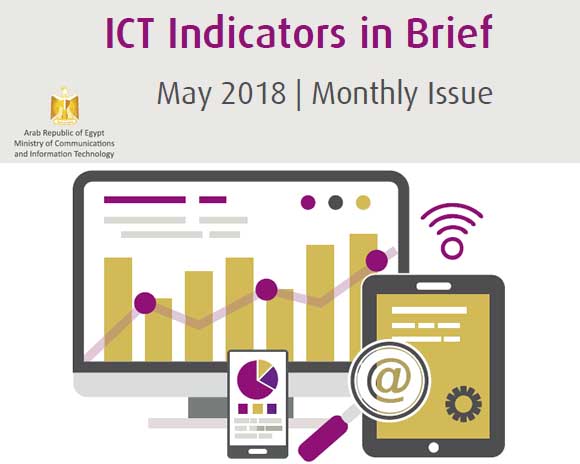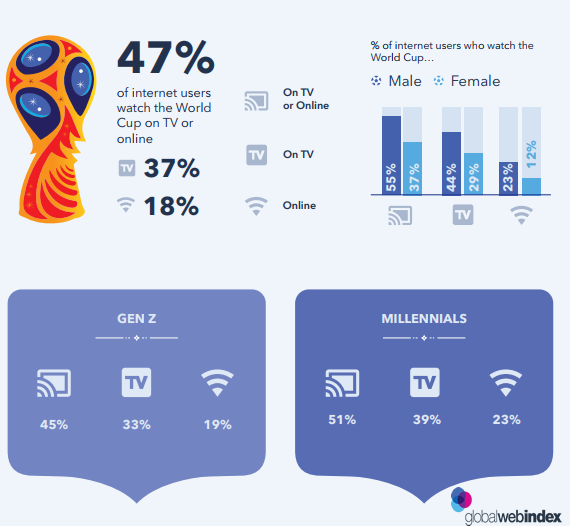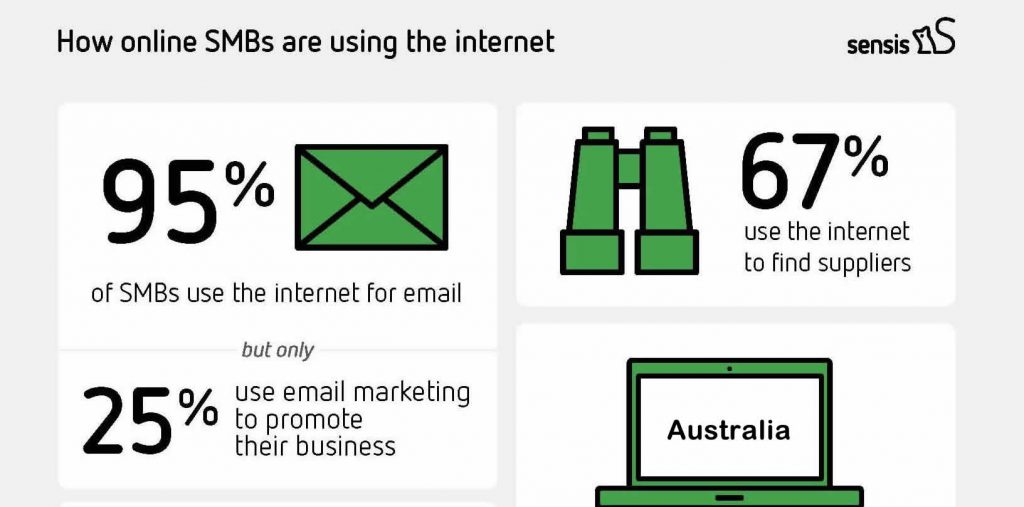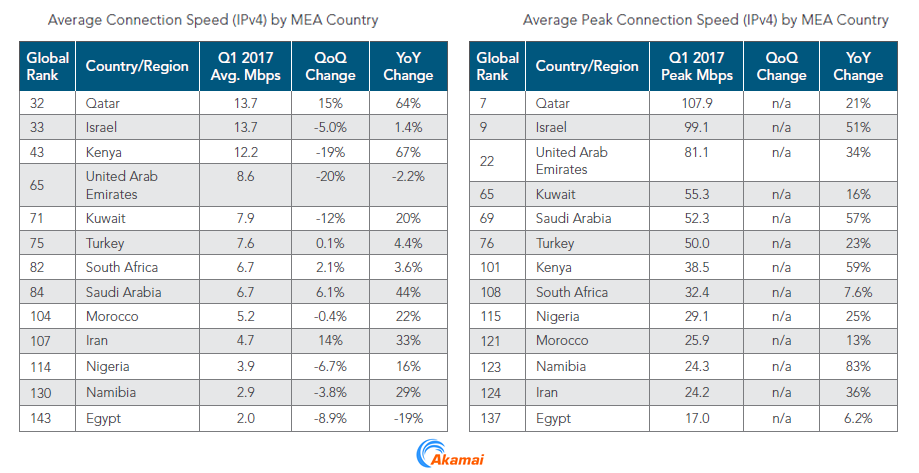Researches
ICT Indicators in Brief, May 2018 | MCIT
A new month with new and updated indicators announced by the Egyptian Ministry of Communications and Information Technology and reflect the state of ICT in the Republic of Egypt. Keep your eyes and ears in such indicators and let’s take a sneak peek: During April 2018, the number of mobile subscriptions in Egypt slipped down to …
Researches
ICT Facts and Figures 2017 | ITU
Young people, aged 15-24, represent almost one-fourth of the total number of individuals using the internet worldwide. They are at the forefront of today’s digital economy, with 70% of the world’s youth are online, while across the total of 104 countries, studied by ITU, more than 80% of the youth population are online. Find out more …
Indicators
47% of Internet Users Are Watching the World Cup on TV or Online, 2018 | GlobalWebIndex
The FIFA world cup is of the most interesting events around the world, take a glance at some insights into the world cup fans, 47% of surveyed online users mentioned that they watch the world cup on TV or online. 37% of surveyed fans reported that they watch the world cup on TV, compared to 18% indicated that …
Researches
Digital in 2018 | We Are Social & Hootsuite
Heading into the year of 2018, the new and recent global digital reports from We Are Social and HootSuite reveals the top line findings of the internet, social media, mobile, and e-commerce use around the whole world. Global Internet Use in 2018 4.021 billion is the total number of active internet users in 2018, with …
Researches
US Moms & Media 2017 | Edison Research
The majority of US moms are age 35 and older with a rate of 66% and two-thirds of them are employed. US moms live in the mobile space. They are heavy media consumer and adopt new media or technology. Figure out the top line findings of how US moms use media and technology in 2017: …
Indicators
95% of Small & Medium Businesses in Australia Use The Internet for Email, 2017 | Sensis
90% of small and medium businesses (SMBs) in Australia were connected to the internet in 2017. So, how online SMBs are using the internet: 95% of SMBs in Australia use the internet for email, with a quarter of them use email marketing to promote their business. 92% use the internet for online banking, 52% use it …
Researches
Media Use in the Middle East, 2017 | Northwestern University in Qatar
There is a noticeable rise in the internet penetration in all countries in the Middle East region with KSA, UAE & Qatar are reaching near saturation levels between 91% & 99%, while Lebanon, Jordan & Tunisia – which had lagged behind – reveals impressive gains. As internet penetration rises, nationals are less likely to be …
Indicators
Once Again, Qatar Led the MEA Region in Average Connection Speed in Q1 2017 | Akamai
In the first quarter of 2017, Qatar grabbed again the first level in average connection speeds with an average of 13.7 Mbps, followed by Israel (13.7 Mbps), Kenya (12.2 Mbps), and then the United Arab Emirates (8.6 Mbps). Egypt lags behind all MEA countries in this metric with an average connection speed of (2 Mbps). …







